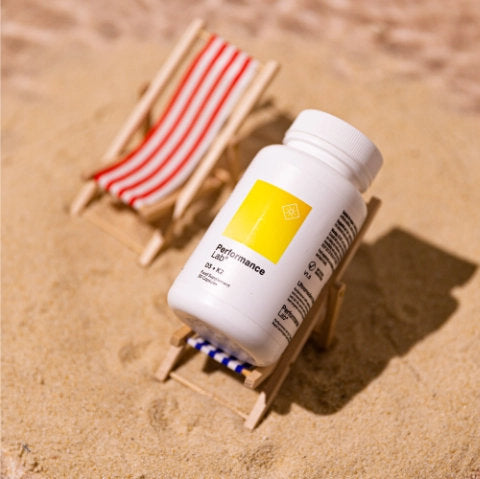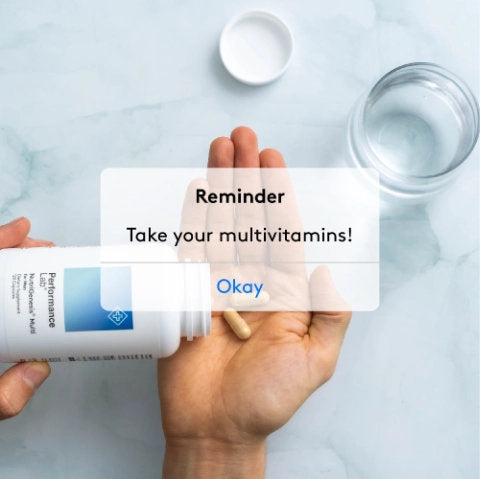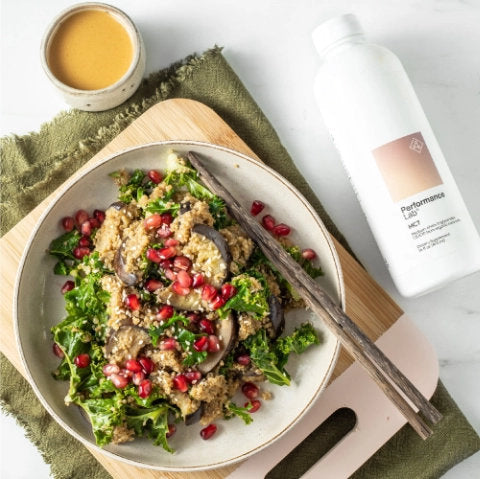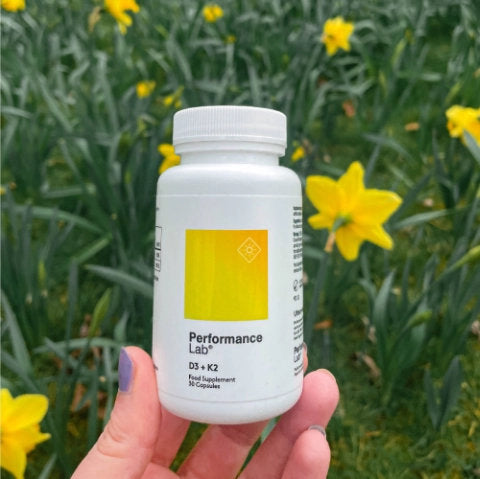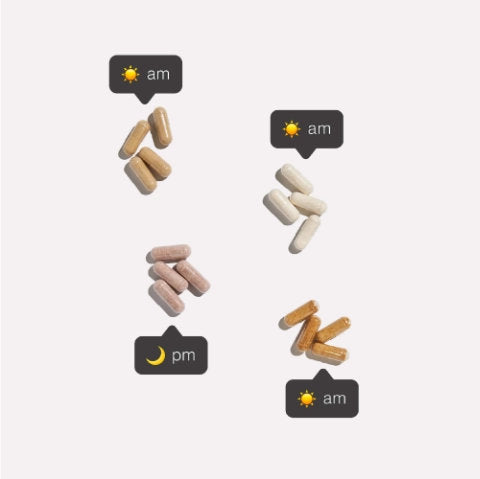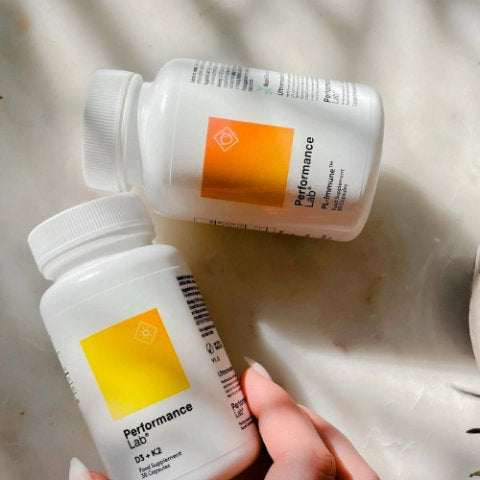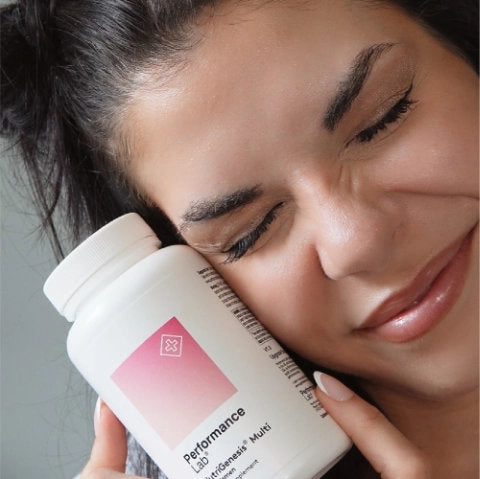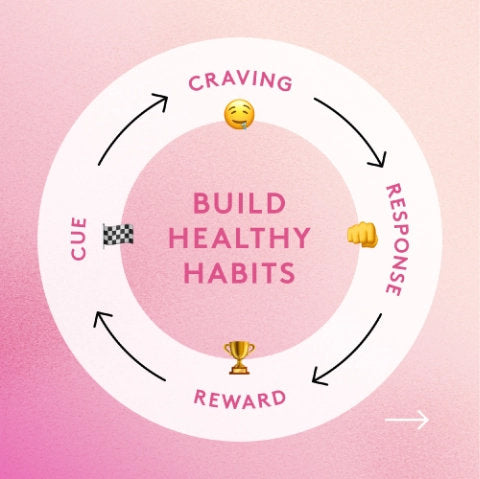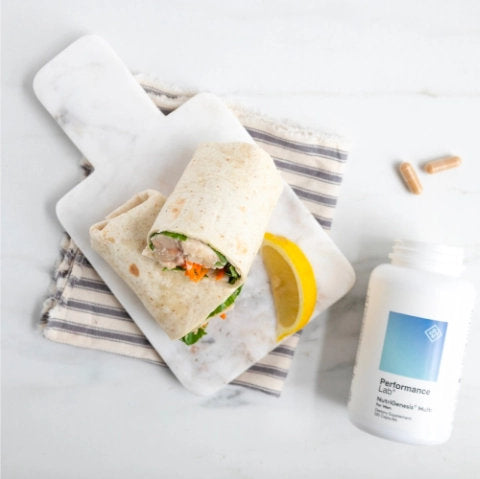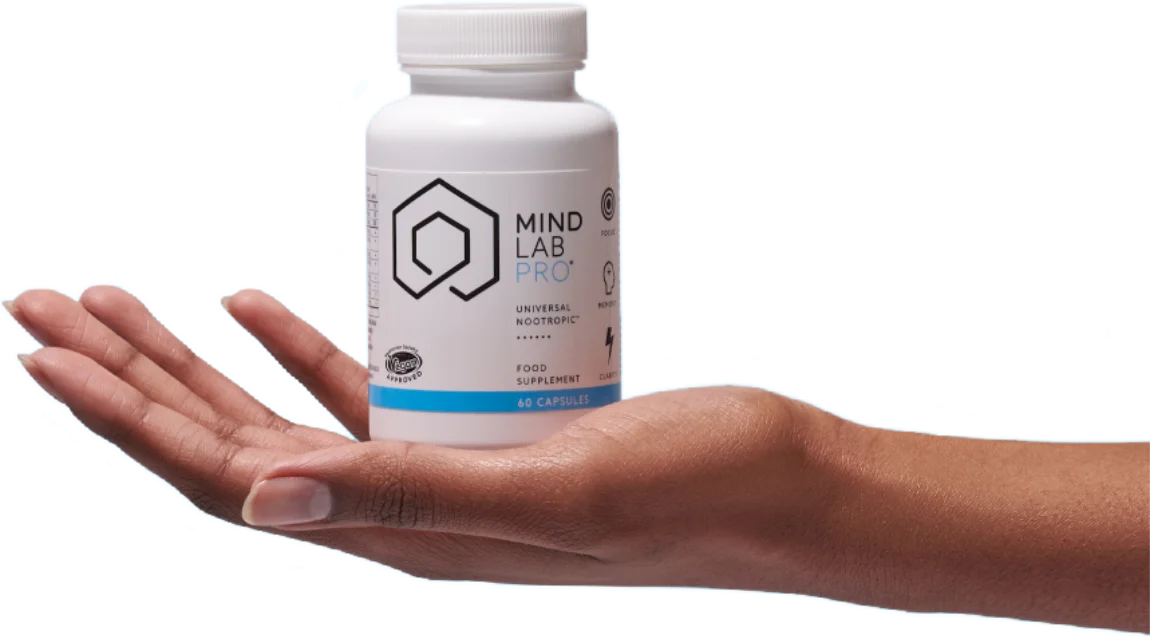Most people typically associate caffeine with coffee, and while it's the most commonly researched compound in coffee, caffeine isn't just limited to the coffee bean.
Caffeine is naturally found in many foods and beverages, and if you're not a fan of coffee or just want to change up your routine, there are many options for you.
What Is Caffeine?
Caffeine is coffee, right? Not exactly. Caffeine is actually a natural plant alkaloid that produces a bitter white powder when extracted from the plant.
In healthy individuals, the half-life of caffeine is around 5 hours, but can range anywhere from 1.5 to upwards of 9 hours 1, depending on how your body metabolizes caffeine; clearance rates largely depend on the biological makeup of the individual, but certain physiologic and environmental characteristics can influence it.
The effects of caffeine are quite similar to those of other stimulants:
- Central nervous system stimulation
- Increased wakefulness
- Sustained intellectual activity and mental alertness
- Decreased reaction times
- Reduced fatigue
Caffeine Metabolism
If you find you're sensitive to caffeine, chances are you've felt jittery after consuming it. And even you're not super sensitive, a cup too many, and you're buzzing for the next six hours.
Caffeine metabolism differs between individuals, but mostly, there are two types of people: those who metabolize caffeine quickly (you can have coffee before bed and still sleep) and those who metabolize it slowly (you have a coffee past noon and you're still up until midnight).
Which one do you fall into?
Let's dive in a bit deeper.
Caffeine metabolism isn't as black and white as it may seem; it's affected by several factors, including health status, medications, lifestyle choices, diet, and of course, genetic polymorphisms.
Caffeine is rapidly absorbed in humans through the gastrointestinal tract, with about 99% being absorbed within 45 minutes of consumption 1, and is then distributed into general circulation.
Peak plasma concentrations occur between 15 and 120 minutes after oral ingestion, but this can vary dramatically based on the presence of other dietary constituents.
Because of caffeine's lipophilic nature, it can pass through virtually all biological membranes and readily cross the blood-brain barrier (BBB), hence why it has such a potent effect on cognitive function.
Caffeine is metabolized in the liver by an enzyme encoded by the CYP1A2 gene 2. However, for about 50% of the population, a variation in the CYP1A2 gene leads to a reduced processing time, which means caffeine tends to have a more profound and long-lasting effect.
The Top 6 Natural Caffeine Sources
Not a fan of coffee? Or are you interested in swapping your mid-day or pre-workout cup for something new? Try these!
#1 Matcha Green Tea
Matcha has blown up the tea market. If you're tired of green tea or looking to spice things up, matcha may be your match.
Despite coming from the same origin, the Camellia sinensis plant, green tea and matcha have slightly different growing methods, which gives matcha its unique characteristics.
Shielding tea bushes from sunlight for 20–30 days before harvest triggers an increase in chlorophyll levels, as well as amino acids, giving matcha its distinct dark green color. After harvesting, the leaves are removed and ground into a fine, bright green powder.
Because the whole leaf powder is ingested, matcha contains higher amounts of caffeine and antioxidants than traditional green tea 3. One cup (230 ml) of matcha (4 tsp. of powder) generally packs around 280 mg of caffeine—8 times as much as a cup of regular green tea.
#2 Tea Leaves (Green)
Caffeine in tea occurs naturally and varies based on the variety of tea plant, its growing conditions, and how it is processed and brewed. On average, one cup of green tea contains around 35mg of caffeine 4 but can range between 35-50mg.
The age of the tea leaves also influences caffeine content, with older leaves containing lower levels of caffeine than younger leaves 5.
#3 Yerba Mate
A traditional South American drink, yerba mate is made from the leaves and twigs of the Ilex paraguariensis plant dried over fire and steeped in hot water to make tea.
It contains several beneficial plant compounds, including 6:
- Xanthines: These act as stimulants and include caffeine and theobromine; an average cup of yerba mate contains about 85mg of caffeine
- Caffeoyl derivatives: Function mainly as antioxidants
- Saponins: Bitter compounds that act as anti-inflammatories and also possess cholesterol-lowering properties
- Polyphenols: Potent antioxidant properties
And while you may think green tea is a rich source of antioxidants, yerba mate actually contains slightly higher amounts 6, 7, besides 7 of the 9 essential amino acids and a full spectrum of vitamins and minerals.
#4 Cacao Beans + Dark Chocolate
Chocolate is made from cacao beans (seeds) derived from the Theobroma cacao tree, or the cocoa tree. This plant produces large, pod-like fruits containing around 20–60 beans surrounded by a sticky, sweet, and slightly tart white pulp. This pulp provides the basis for chocolate products.
Beans fermented and dried are referred to as cacao, while after fermentation, they are called cocoa beans.
While cacao provides an abundance of health benefits, it also provides around 230mg of caffeine per 100g, while 75-80% dark chocolate provides around 80mg per 100g (3.5oz) 8. Typically, the higher the cacao content of chocolate, the more caffeine it will contain.
#5 Guarana Berries
Not typically something you see every day, guarana (Paullinia cupana) is a plant native to the Brazilian Amazon basin prized for its fruit. A mature guarana fruit is about the size of a coffee berry and resembles the human eye.
It contains an impressive range of stimulants, including caffeine, theophylline, and theobromine, as well antioxidants, such as tannins, saponins, and catechins 9. Interestingly, guarana contains an antioxidant profile very similar to green tea!
And if it's a caffeine hit you're looking for, guarana berries may contain up to four to six times more caffeine than coffee beans 10.
#6 Natural Sports Supplements
There are plenty of sports supplements available that contain caffeine. However, the problem with most is that they contain excessive amounts that often leave you feeling dizzy and jittery.
But if you can find supplements that contain natural sources of caffeine, like Performance Lab Caffeine 2, you won't get any of the nasty side effects that come with high-caffeine supplements.

Caffeine 2 uses natural caffeine sourced from Coffea robusta seeds; it's formulated with Natural Caffeine 50 mg + Suntheanine® 100 mg to deliver greater dosing precision, fewer side effects, and superior performance-tuned stimulation.
Final Thoughts
There are few things better than a steaming cup of coffee (only if you're a coffee lover) on a weekend morning and the sweet, warm buzz that follows.
But whether you're sipping yerba mate or green tea or nibbling on a square of dark chocolate, there are lots of options available to give you a little pick-me-up if you feel like switching it up.
Color out of the lines, and don't be afraid to mix it up when it comes to your caffeine choices!
References
- Institute of Medicine (US) Committee on Military Nutrition Research. Caffeine for the Sustainment of Mental Task Performance: Formulations for Military Operations. Washington (DC): National Academies Press (US); 2001. 2, Pharmacology of Caffeine. Available from: https://www.ncbi.nlm.nih.gov/books/NBK223808/
- I Guessous, M Dobrinas, Z Kutalik, et al. Caffeine intake and CYP1A2 variants associated with high caffeine intake protect non-smokers from hypertension. Hum Mol Genet. 2012;21(14):3283-3292.
- K Jakubczyk, J Kochman, A Kwiatkowska, et al. Antioxidant Properties and Nutritional Composition of Matcha Green Tea. Foods. 2020;9(4):483.
- MA Heckman, J Weil, E Gonzalez de Mejia. Caffeine (1, 3, 7-trimethylxanthine) in foods: a comprehensive review on consumption, functionality, safety, and regulatory matters. J Food Sci. 2010;75(3):R77-R87.
- YS Lin, YJ Tsai, JS Tsay, JK Lin. Factors affecting the levels of tea polyphenols and caffeine in tea leaves. J Agric Food Chem. 2003;51(7):1864-1873.
- CI Heck, EG de Mejia. Yerba Mate Tea (Ilex paraguariensis): a comprehensive review on chemistry, health implications, and technological considerations. J Food Sci. 2007;72(9):R138-R151.
- S Chandra, E De Mejia Gonzalez. Polyphenolic compounds, antioxidant capacity, and quinone reductase activity of an aqueous extract of Ardisia compressa in comparison to mate (Ilex paraguariensis) and green (Camellia sinensis) teas. J Agric Food Chem. 2004;52(11):3583-3589.
- https://fdc.nal.usda.gov/fdc-app.html#/food-details/170273/nutrients
- S Azam, N Hadi, NU Khan, SM Hadi. Antioxidant and prooxidant properties of caffeine, theobromine and xanthine. Med Sci Monit. 2003;9(9):BR325-BR330.
- GS da Silva, KM Canuto, PRV Ribeiro, et al. Chemical profiling of guarana seeds (Paullinia cupana) from different geographical origins using UPLC-QTOF-MS combined with chemometrics. Food Res Int. 2017;102:700-709.


